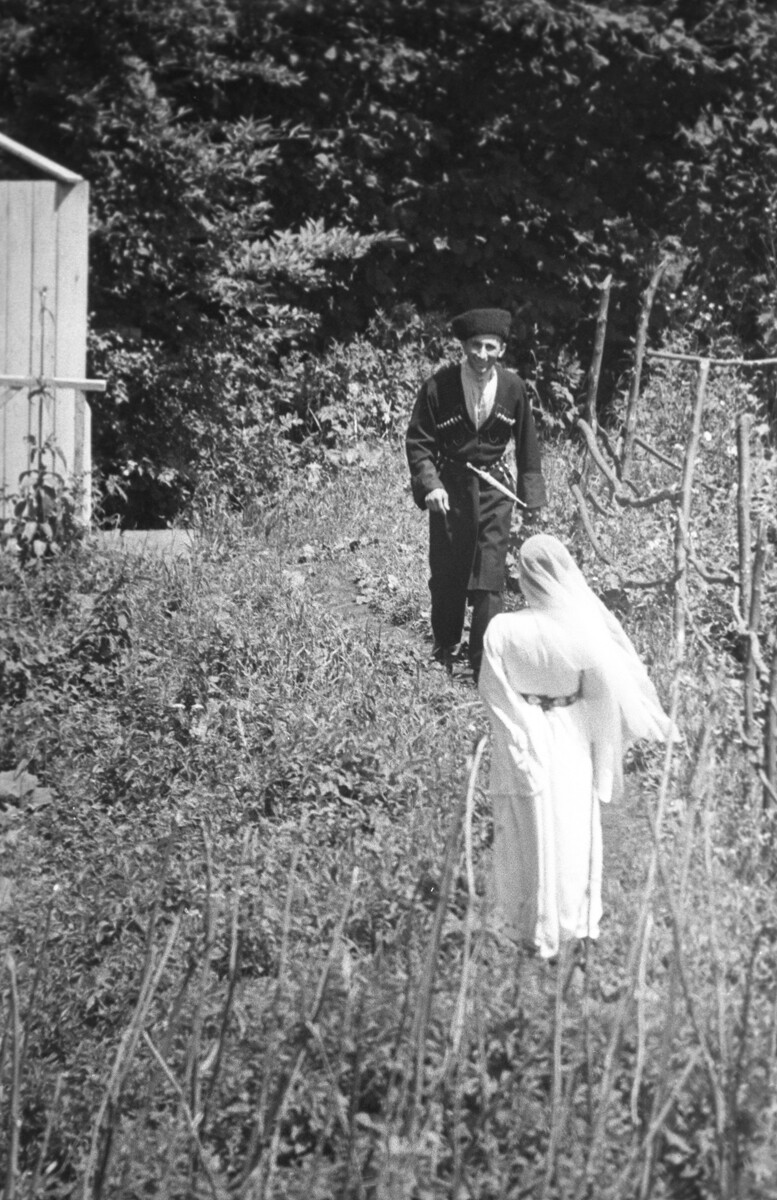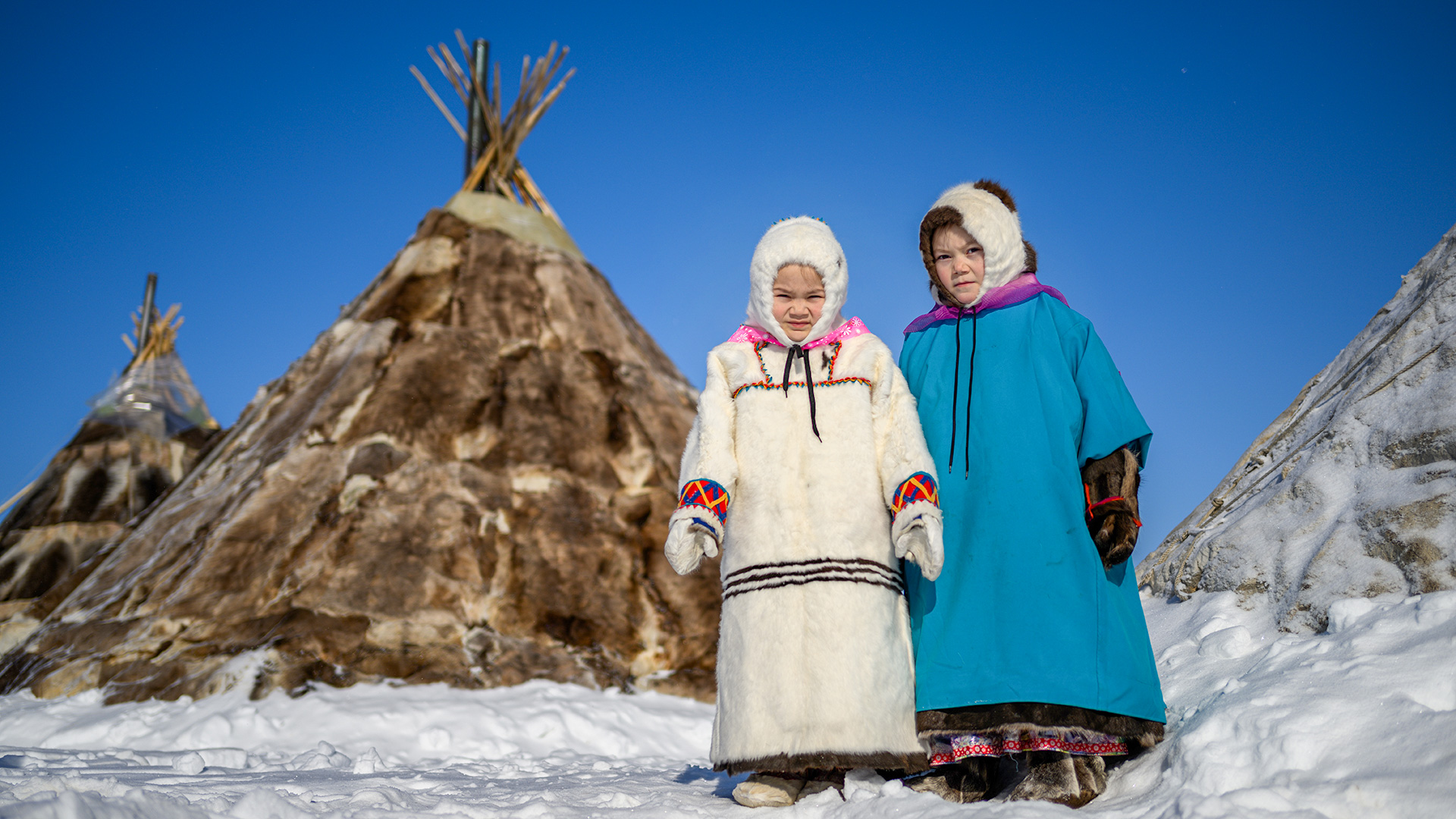
Ethnic wedding dresses of the Russian peoples (PHOTOS)

A Russian wedding is a bright and cheerful event, which it is customary to celebrate on a large scale. Women usually choose either a festive long white dress with a veil or just an evening outfit to wear afterward. Men often wear a suit. However, many couples also choose ethnic outfits that look very elegant.
Ossetians
 A young woman in a traditional dress in Vladikavkaz.
A young woman in a traditional dress in Vladikavkaz.
There are workshops and bridal showrooms in the Caucasus where customers can order a dress in the national style. As a rule, Caucasian wedding dresses are long, floor-length, with full arms and a narrow waist. In the Republic of North Ossetia-Alania, traditional dresses are sewed from expensive fabrics (satin, silk, velvet) and often decorated with gold or silver embroidery. Sometimes, in addition to the needlework, there are also ornaments made of gems. A long kaftan jacket is usually worn over the dress. On the waist, there is always a wide belt, most often made of metal (in especially expensive outfits, it’s made of silver). The bride’s head, meanwhile, is covered with a traditional hat. Nowadays, the wedding dresses are mostly white, but, historically, the upper jacket and the hat were red.
 The wedding in the North Ossetian village of Khumalag, 1970.
The wedding in the North Ossetian village of Khumalag, 1970.
Men wear either a regular business suit or a traditional black or red cherkesska coat with a papakha hat.
Chechens
 A young woman in a wedding dress in Grozny.
A young woman in a wedding dress in Grozny.
Brides in the Chechen Republic often wear embroidered shawls in the same style as their dresses, instead of a veil. Sometimes, the bride may also wear a jeweled tiara over the headscarf.
As a rule, the dresses themselves are not only white, but in any pastel color: cream, light pink, golden, decorated with lace and gems. They can be both straight or very fluffy, with long plumes.
Ingushetians
 The wedding dresses showroom in the city of Nazran.
The wedding dresses showroom in the city of Nazran.
The wedding dress of an Ingush lady is straight, with a narrow waist, a wide belt and a huge amount of jewelry. The gown is accompanied by a hat - today, the entire outfit is sewn from white fabrics and embroidered with gold or silver threads. On top, the bride wears a veil or translucent silk shawl to hide her face. Traditionally, the dress is supplemented with “outer” wide sleeves - nadugi - to protect the bride from the accidental touch of strangers.
Tatars
 A wedding in a mosque in Kazan.
A wedding in a mosque in Kazan.
Modern wedding dresses in the Republic of Tatarstan are similar to European ones, but with some interesting ethnic details and, as a rule, they don’t have to be white. They can be purple, green or even blue, which are the national colors. On the head of the bride can be a scarf or a hijab or a veil with a diadem and a traditional Tatar cap - a fez. Before the civil registration of marriage, Muslims hold a wedding ceremony in a mosque and the bride must have her head covered. It is not rare that the bride chooses different dresses for the wedding and for the registration, for example, a strict white dress with a scarf in the same style and a colorful national dress.
Men, meanwhile, wear the most usual formal suits, but they put on a fez in the mosque.
Mari people
 "Mari Wedding" performed by the dance ensemble, 1973.
"Mari Wedding" performed by the dance ensemble, 1973.
Historically, a bride wore her ceremonial white dress with bright (usually red) embroidery, with a shawl tied on her head, which was replaced by a fox hat after the wedding ceremony (or official registration). Men wore ordinary suits, but tied their shirts with a long embroidered belt.
 Mari wedding, 1905.
Mari wedding, 1905.
Modern Mari couples who want to make a wedding in the folk style can simply decorate traditional clothing with long colorful ribbons, multi-coin necklaces and wide belts. Guests at a Mari wedding also attach brightly colored ribbons to ordinary clothing.
Nenets people
 Traditional Nenets wedding.
Traditional Nenets wedding.
Indigenous people of the North, the Nenets are inhabitants of the tundra, many of whom are still engaged in reindeer herding. They do not have a traditional wedding costume, but they always wore new and more expensive clothes for the celebration and the bride’s head was decorated with a red ribbon with beads and braids.
 A bride jumps over the fire, 1983.
A bride jumps over the fire, 1983.
The celebration itself takes place in a specially built tent and before entering the tent, the couple must jump over the fire to undergo a purification ceremony. This tradition has survived to this day.













